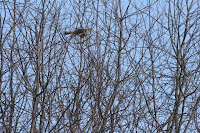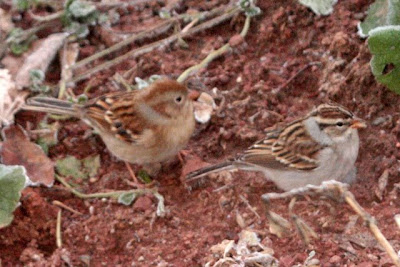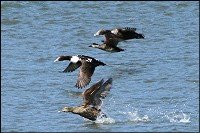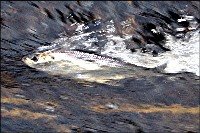Harrier Over November Fields ::: for Scenic Sunday

.
For more Scenic Sunday photos just click on the highlighted name or on the badge on the side bar.
nature photography ( mainly birds) found in New Brunswick, Canada

.
For more Scenic Sunday photos just click on the highlighted name or on the badge on the side bar.
Posted by
me ann my camera
at
4:17 PM
14
comments
![]()
 They are called Common Goldeneye,
They are called Common Goldeneye,  but I don't think so common in their beauty, and they could easily have been named 'Polka Dots' for look at the beautiful white dot on the head of these male ducks. We found this group yesterday in the Saint John River at Maugerville.
but I don't think so common in their beauty, and they could easily have been named 'Polka Dots' for look at the beautiful white dot on the head of these male ducks. We found this group yesterday in the Saint John River at Maugerville. Winging their way over the water these Megansers carried their reflections along with them as they took flight over the Saint John in response to the stopping of our vehicle along the roadside.
Winging their way over the water these Megansers carried their reflections along with them as they took flight over the Saint John in response to the stopping of our vehicle along the roadside.
 Seeing these Canada Geese and Mallards was no surprise, but finding this lone, male Ring-necked Duck was. All of these photos were taken along the beautiful Saint John River in the Maugerville area yesterday.
Seeing these Canada Geese and Mallards was no surprise, but finding this lone, male Ring-necked Duck was. All of these photos were taken along the beautiful Saint John River in the Maugerville area yesterday.
My appreciative thanks to Misty for hosting this site. To see other participant's photo contributions just click HERE or on the Camera Critters logo on the side panel.
Posted by
me ann my camera
at
6:16 AM
26
comments
![]()

 I found this beautiful place and in the distance is what I think is an old, no longer used, railroad bridge. I had stopped when seeing some ducks in the water, but before I could get any pictures they had left. I almost left too, but then I heard a loud, constant honking, and finally found its source in the green shadowy area to the left
I found this beautiful place and in the distance is what I think is an old, no longer used, railroad bridge. I had stopped when seeing some ducks in the water, but before I could get any pictures they had left. I almost left too, but then I heard a loud, constant honking, and finally found its source in the green shadowy area to the left  of the above picture. It was a lone Canada Goose, and it was difficult to see for the shimmering play of light upon the water gave it a bit of camouflage. If it hadn't been for its loud 'honking' I wouldn't have seen it at all.
of the above picture. It was a lone Canada Goose, and it was difficult to see for the shimmering play of light upon the water gave it a bit of camouflage. If it hadn't been for its loud 'honking' I wouldn't have seen it at all.
 Returning home again, I encountered darkening skies and more fog during the last half hour of my journey, arriving home in darkness.
Returning home again, I encountered darkening skies and more fog during the last half hour of my journey, arriving home in darkness.
Posted by
me ann my camera
at
6:47 AM
8
comments
![]()





Posted by
me ann my camera
at
6:58 AM
16
comments
![]()
 I saw a dark morph Rough-legged Hawk today at Sheffield, along highway #105 which borders the Saint John River at that portion of the highway. The Rough-legged was high above the trees, just a speck really, circling in the sky, but my camera lense was able to pull it in close enough for me to id it. I have seen Rough-legged Hawks there other winters and they were not always as distant as this one was.
I saw a dark morph Rough-legged Hawk today at Sheffield, along highway #105 which borders the Saint John River at that portion of the highway. The Rough-legged was high above the trees, just a speck really, circling in the sky, but my camera lense was able to pull it in close enough for me to id it. I have seen Rough-legged Hawks there other winters and they were not always as distant as this one was.  By far my best photo of a Rough-legged is this one, with its wings raised upward showing its distinctive under wing pattern as it landed on a tree branch. This photo was taken in December, 2002 in the Sheffield area.
By far my best photo of a Rough-legged is this one, with its wings raised upward showing its distinctive under wing pattern as it landed on a tree branch. This photo was taken in December, 2002 in the Sheffield area. The under wing pattern of the light
The under wing pattern of the light  morph Rough-legged Hawk has more white on it than the dark morph as its axillaries and coverts are light also. To the left is a light morph Rough-legged showing its pale head and chest. The dark morph adult has no white on its head or chest. These photos of the white morph Rough-legged Hawk were taken at Sheffield in December, 2006.
morph Rough-legged Hawk has more white on it than the dark morph as its axillaries and coverts are light also. To the left is a light morph Rough-legged showing its pale head and chest. The dark morph adult has no white on its head or chest. These photos of the white morph Rough-legged Hawk were taken at Sheffield in December, 2006.
Posted by
me ann my camera
at
2:50 PM
11
comments
![]()

These little sparrow visitors, a Field Sparrow and a Chipping Sparrow, are still at our feeders today. This marks their seventh day of attendance since their arrival on the 18th.

The ground is still snow covered, since a snowstorm on Saturday, and the temper -atures have been, and remain, below freezing. At the time of this posting it is -12 degrees Celsius. I wonder how much longer these little sparrows will stay?
Posted by
me ann my camera
at
8:06 AM
6
comments
![]()
 I had been sitting upstairs at my computer when I saw a small flock of birds fly to the top of my neighbour's trees across the street from me. Rushing downstairs to get my binoculars to see what they were, just as I id'ed them they left, but then surprised me for they had circled around the back of my house and were waiting for me in our feeder area when I looked out the window again. I wait for these birds each year. They are visually exciting with their handsome yellow ski visors and black and yellow patterning.
I had been sitting upstairs at my computer when I saw a small flock of birds fly to the top of my neighbour's trees across the street from me. Rushing downstairs to get my binoculars to see what they were, just as I id'ed them they left, but then surprised me for they had circled around the back of my house and were waiting for me in our feeder area when I looked out the window again. I wait for these birds each year. They are visually exciting with their handsome yellow ski visors and black and yellow patterning. Evening Grosbeaks; they arrived this
Evening Grosbeaks; they arrived this  morning with our first real snow storm of the season. I watched while the male fed on seeds from our Manitoba Maple and females fed on the crab apples from our Ornamental Flowering Crab Apple Tree.
morning with our first real snow storm of the season. I watched while the male fed on seeds from our Manitoba Maple and females fed on the crab apples from our Ornamental Flowering Crab Apple Tree.
I am sure they will be back for more!
My appreciative thanks to Misty for hosting this site. To see other participant's photo contributions just click HERE or on the Camera Critters logo on the side panel.
Posted by
me ann my camera
at
9:40 AM
29
comments
![]()
This is more of a tale of a bird sighting, rather than of a bird encounter adventure. At this time of year, as both the leaves and temperatures drop and we are anticipating the arrival of snow, it is exciting to see the recent arrivals of different birds moving into the area for the season. During the past week I have seen a Red-tailed Hawk, and yesterday I had posted photos of a Sharp-shinned or Cooper's Hawk in my own backyard.
As the season progress I am sure I shall have other opportunities to get closer photos of this species for they frequently visit our feeder area as winter progresses. Shown below is one such photo opportunity in January ('07) when I took this picture of a Northern Shrike at our feeder area.
Posted by
me ann my camera
at
8:24 AM
14
comments
![]()


I saw the Jays dispersing while at the same time I saw a hawk scrambling upwards among the branches of a clump of Alders. It was making its way to the upper branches while staying within them.
Posted by
me ann my camera
at
7:34 AM
14
comments
![]()

 Sparrows around the end of October or early Novem -ber. These two sparrows seemed to be travel -ing with each other and they were seen feeding together often during the day. We woke to snow on the ground this morning and I have not seen sight of them yet today so hopefully they are on their way further south to areas lacking the white stuff.
Sparrows around the end of October or early Novem -ber. These two sparrows seemed to be travel -ing with each other and they were seen feeding together often during the day. We woke to snow on the ground this morning and I have not seen sight of them yet today so hopefully they are on their way further south to areas lacking the white stuff.

editing note 1:15 p.m:
They showed up just before noon, and as seen in the photo below, still here today, still together.
Posted by
me ann my camera
at
10:06 AM
7
comments
![]()




